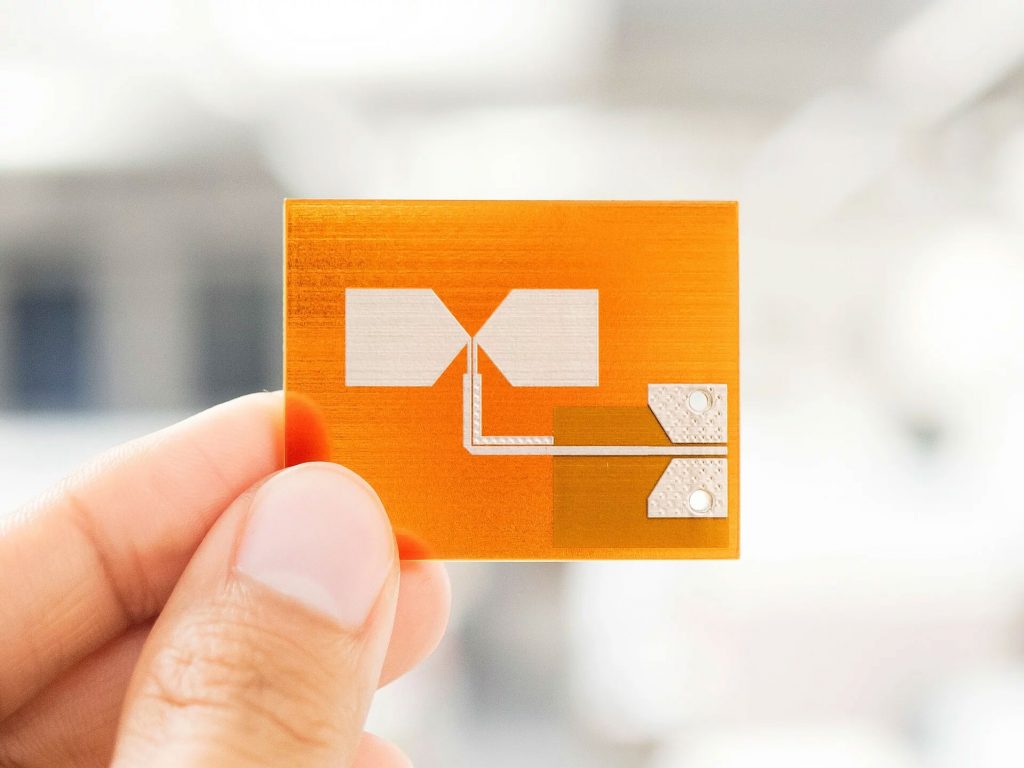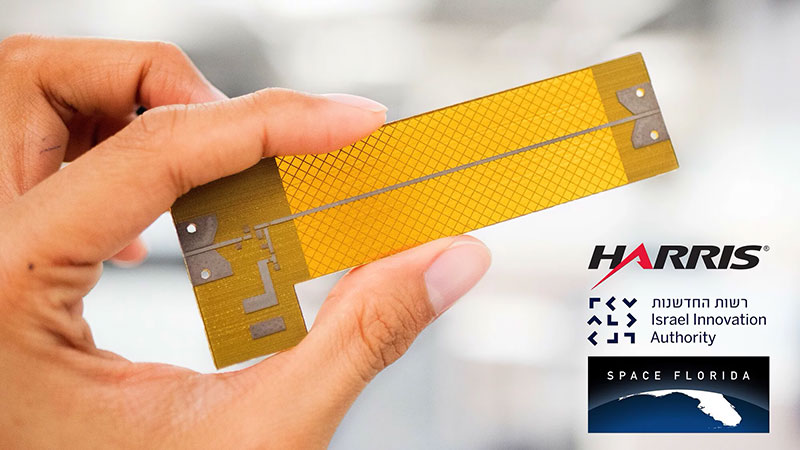This post was first published by Harris Corporation here..
Dr. Arthur Paolella, senior scientist for Harris Space and Intelligence Systems, sees additive manufacturing, or 3-D printing, playing an important role in advancing the usefulness of smallsats and the overall LEO economy. “The applications of 3-D printing are broad, touching almost every aspect of research, design, and manufacturing,” says Paolella. “One of the areas we have been exploring is in the research and development of 3-D printed radio frequency (RF) circuits and systems for space applications.”

Over the past two years, Harris has partnered with the Israeli-based company, Nano Dimension, to do just that. With support from Space Florida—Florida’s aerospace economic development agency—and the Israel Innovation Authority, the companies have developed a 3-D printed proof-of-concept RF antenna designed to operate at 5.2 GHz and an RF amplifier with operation up to 6 GHz.
According to Paolella, 3-D printing of RF systems offers several potential advantages, like high performance, rapid development time, and the ability to print complex shapes and conformal systems that traditional manufacturing cannot achieve. Devoid from industry work in this area, however, has been data on the long-term performance of 3-D printed materials in specific environments—and space, in particular.
That is about to change, thanks to a Harris project that has been selected for flight by the International Space Station (ISS) U.S. National Laboratory. “The objective is to fly an experiment consisting of 3-D printed materials and analyze the RF properties of those materials in a space environment,” Paolella explains. “As far as we know, this will be the first systematic approach to analyzing 3-D printed materials for RF systems in space.”
The project will be part of the Materials International Space Station Experiment (MISSE), a series of experiments mounted externally on the International Space Station with the goal of investigating the effects of long-term exposure of materials to the harsh space environment. Harris is designing, building, and testing the hardware for the experiment. The ISS National Lab is responsible for the integration and testing of the hardware into the MISSE module. The ISS National Lab will also support launch operations and allocate necessary crew time to conduct the study, test data transfer, and orchestrate the successful recovery of the hardware.
“The plan is to test the RF system at three points in the program: pre-flight: in-flight, and post-flight,” says Paolella. “Development of the hardware is expected to take one year, followed by the time required to integrate it into the MISSE module and launch. We see this as a significant opportunity to qualify new 3-D printed materials for space and increase the technology readiness levels up to TRL-9 in a LEO environment. And we are very optimistic. The circuits developed to this date show good RF performance and have suitability for space applications.”



